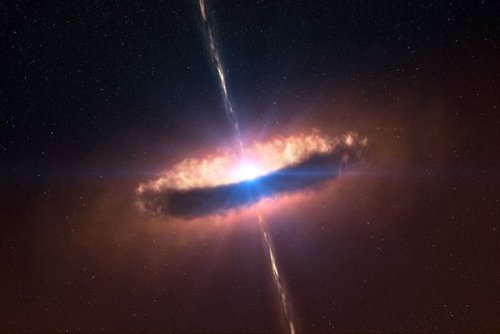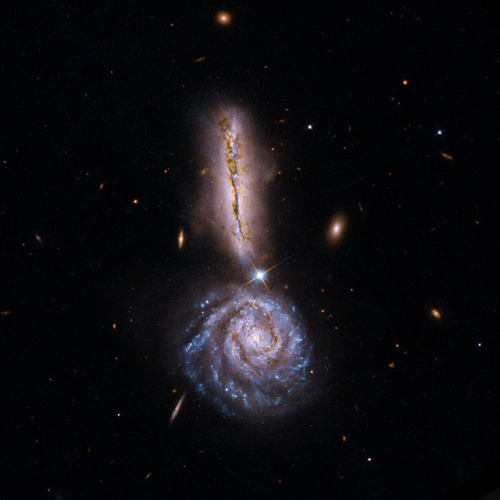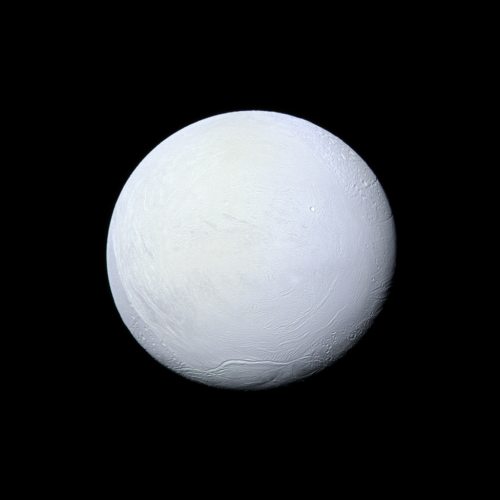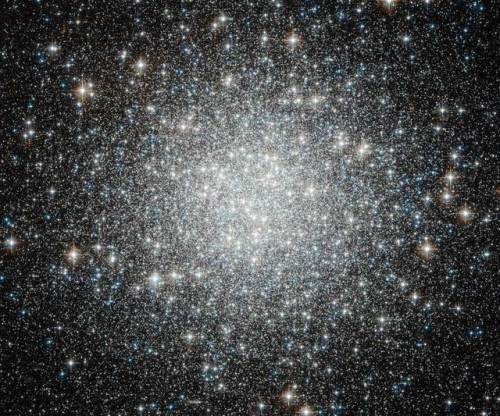Chang'E-4: The Yutu-2 Rover Isn’t Wasting Any Time, & Has Driven Away From The Lander Toward (but Not

Chang'E-4: The Yutu-2 rover isn’t wasting any time, & has driven away from the lander toward (but not into) a nearby crater. Reminder that all photos from the far side of the moon are being relayed to earth by the Queqiao spacecraft, which is parked in a halo orbit around the Earth-Moon L2 point, about 61,500km behind the moon. “Halo orbit” means it’s about that far behind the moon, but always off to one side or the other from the actual L2 point so it has a line of sight to the Earth. Wouldn’t be much of a relay otherwise.
More Posts from Riekod and Others

The First Real Photo Of Entire Earth From Apollo 8 In 1968.

Stellar Winds
Stellar winds are fast moving flows of material (protons, electrons and atoms of heavier metals) that are ejected from stars. These winds are characterised by a continuous outflow of material moving at speeds anywhere between 20 and 2,000 km/s.

In the case of the Sun, the wind ‘blows’ at a speed of 200 to 300 km/s from quiet regions, and 700 km/s from coronal holes and active regions.

The causes, ejection rates and speeds of stellar winds vary with the mass of the star. In relatively cool, low-mass stars such as the Sun, the wind is caused by the extremely high temperature (millions of degrees Kelvin) of the corona.

his high temperature is thought to be the result of interactions between magnetic fields at the star’s surface, and gives the coronal gas sufficient energy to escape the gravitational attraction of the star as a wind. Stars of this type eject only a tiny fraction of their mass per year as a stellar wind (for example, only 1 part in 1014 of the Sun’s mass is ejected in this way each year), but this still represents losses of millions of tonnes of material each second. Even over their entire lifetime, stars like our Sun lose only a tiny fraction of 1% of their mass through stellar winds.

In contrast, hot, massive stars can produce stellar winds a billion times stronger than those of low-mass stars. Over their short lifetimes, they can eject many solar masses (perhaps up to 50% of their initial mass) of material in the form of 2,000 km/sec winds.

These stellar winds are driven directly by the radiation pressure from photons escaping the star. In some cases, high-mass stars can eject virtually all of their outer envelopes in winds. The result is a Wolf-Rayet star.

Stellar winds play an important part in the chemical evolution of the Universe, as they carry dust and metals back into the interstellar medium where they will be incorporated into the next generation of stars.
source (read more) + Wolf–Rayet star


Cloud Chambers: Visualizing Radiation
The cloud chamber, also known as the Wilson chamber, is a particle detector used for detecting ionizing radiation.
In its most basic form, a cloud chamber is a sealed environment containing a supersaturated vapor of water or alcohol. When a charged particle (for example, an alpha or beta particle) interacts with the mixture, the fluid is ionized. The resulting ions act as condensation nuclei, around which a mist will form (because the mixture is on the point of condensation).
The high energies of alpha and beta particles mean that a trail is left, due to many ions being produced along the path of the charged particle. These tracks have distinctive shapes, for example, an alpha particle’s track is broad and shows more evidence of deflection by collisions, while an electron’s is thinner and straight. -(x)
More science and gifs on my blog: rudescience Gif made from: This video by The Royal Institution References: (x), (x).

One of the challenges in studying tornadoes is being in the right place at the right time. In that regard, storm chaser Brandon Clement hit the jackpot earlier this week when he captured this footage of a tornado near Sulphur, Oklahoma from his drone. He was able to follow the twister for several minutes until it apparently dissipated.
Scientists are still uncertain exactly how tornadoes form, but they’ve learned to recognize the key ingredients. A strong variation of wind speed with altitude can create a horizontally-oriented vortex, which a localized updraft of warm, moist air can lift and rotate to vertical, birthing a tornado. These storms most commonly occur in the central U.S. and Canada during springtime, and researchers are actively pursing new ways to predict and track tornadoes, including microphone arrays capable of locating them before they fully form. (Image and video credit: B. Clement; via Earther)




What is a protostar?
The formation of stars begins with the collapse and fragmentation of molecular clouds into very dense clumps. These clumps initially contain ~0.01 solar masses of material, but increase in mass as surrounding material is accumulated through accretion. The temperature of the material also increases while the area over which it is spread decreases as gravitational contraction continues, forming a more stellar-like object in the process. During this time, and up until hydrogen burning begins and it joins the main sequence, the object is known as a protostar.
This stage of stellar evolution may last for between 100,000 and 10 million years depending on the size of the star being formed. If the final result is a protostar with more than 0.08 solar masses, it will go on to begin hydrogen burning and will join the main sequence as a normal star. For protostars with masses less than this, temperatures are not sufficient for hydrogen burning to begin and they become brown dwarf stars.
Protostars are enshrouded in gas and dust and are not detectable at visible wavelengths. To study this very early stage of stellar evolution, astronomers must use infrared or microwave wavelengths.
Protostars are also known as Young Stellar Objects (YSOs).

VV 340, pair of interacting galaxies in Boötes. The two galaxies shown here are in the early stage of an interaction that will eventually lead to them merging in millions of years.
Credit: NASA/STScI/NRAO/A.Evans et al
Birth of Massive Black Holes in the Early Universe Revealed
When the universe was still a baby – less than 1 billion years old – some of its stars turned into monster black holes. A key mystery in astronomy has been: why are there so many supermassive black holes in the early universe?

A new study, supported by funding from NASA, the National Science Foundation and a grant from the European Commission, suggests that massive black holes thrive when galaxies form very quickly. To make a galaxy, you need stars, which are born out of gas clouds, but also an invisible substance called dark matter, which acts as a glue to keep stars from flying away from the galaxy. If the dark matter’s “halo” structure grows quickly early in its life, the formation of stars is stifled. Instead a massive black hole can form before the galaxy takes shape. Black holes ravenously eat gas that would have otherwise produced new stars, and become larger and larger.

Previously, scientists theorized that powerful radiation from other galaxies muted the formation of stars in these young regions with massive black holes. But new simulations suggest that the rapid growth of galaxies is key to growing the black holes.

A black hole is an extremely dense astronomical object from which nothing can escape, not even light. When a star explodes in a supernova, a black hole can be left behind. Alternatively, a supermassive star can burn through its fuel quickly and turn into a black hole, no explosion needed. Scientists say this is how many massive black holes form in rapidly assembling proto-galaxies.
The simulation-based study, to be reported January 23rd in the journal Nature, also finds that massive black holes are much more common in the universe than previously thought. read more

Saturn’s moon Enceladus, covered in snow and ice, resembles a perfectly packed snowball in this image from NASA’s Cassini mission.
Image credit: NASA/JPL-Caltech/Space Science Institute

Blue Straggler Stars in Globular Cluster M53
Image Credit: ESA/Hubble, NASA
-
 taikonaut-lei-feng reblogged this · 7 months ago
taikonaut-lei-feng reblogged this · 7 months ago -
 jbatispte reblogged this · 3 years ago
jbatispte reblogged this · 3 years ago -
 jbatispte liked this · 3 years ago
jbatispte liked this · 3 years ago -
 terakuhn reblogged this · 3 years ago
terakuhn reblogged this · 3 years ago -
 liminally-human reblogged this · 5 years ago
liminally-human reblogged this · 5 years ago -
 ironychan reblogged this · 5 years ago
ironychan reblogged this · 5 years ago -
 grogumybrogu liked this · 6 years ago
grogumybrogu liked this · 6 years ago -
 moondahluna reblogged this · 6 years ago
moondahluna reblogged this · 6 years ago -
 deephoagiethinghumanoid-blog liked this · 6 years ago
deephoagiethinghumanoid-blog liked this · 6 years ago -
 chiante-mais-charmante-blog liked this · 6 years ago
chiante-mais-charmante-blog liked this · 6 years ago -
 delusionalsun liked this · 6 years ago
delusionalsun liked this · 6 years ago -
 klogansworld liked this · 6 years ago
klogansworld liked this · 6 years ago -
 okayest-gay liked this · 6 years ago
okayest-gay liked this · 6 years ago -
 classiccynicism liked this · 6 years ago
classiccynicism liked this · 6 years ago -
 mistresscass liked this · 6 years ago
mistresscass liked this · 6 years ago -
 ddrexlerd liked this · 6 years ago
ddrexlerd liked this · 6 years ago -
 mutato-nomine-music liked this · 6 years ago
mutato-nomine-music liked this · 6 years ago -
 sparklytreepsychiccalzone-blog liked this · 6 years ago
sparklytreepsychiccalzone-blog liked this · 6 years ago -
 liam7629-blog liked this · 6 years ago
liam7629-blog liked this · 6 years ago -
 rock-muncher liked this · 6 years ago
rock-muncher liked this · 6 years ago -
 play-doh-slut reblogged this · 6 years ago
play-doh-slut reblogged this · 6 years ago -
 astromateblog-blog liked this · 6 years ago
astromateblog-blog liked this · 6 years ago -
 sammnotviole liked this · 6 years ago
sammnotviole liked this · 6 years ago -
 photo-junkies liked this · 6 years ago
photo-junkies liked this · 6 years ago -
 thoughtfultreeavenue liked this · 6 years ago
thoughtfultreeavenue liked this · 6 years ago -
 thisismyhalfroomcutie liked this · 6 years ago
thisismyhalfroomcutie liked this · 6 years ago -
 coolsecretstudentbluebirdus-blog reblogged this · 6 years ago
coolsecretstudentbluebirdus-blog reblogged this · 6 years ago -
 coolsecretstudentbluebirdus-blog reblogged this · 6 years ago
coolsecretstudentbluebirdus-blog reblogged this · 6 years ago -
 mrforeverwest liked this · 6 years ago
mrforeverwest liked this · 6 years ago -
 sinnephi liked this · 6 years ago
sinnephi liked this · 6 years ago -
 nimis-weakest-napling reblogged this · 6 years ago
nimis-weakest-napling reblogged this · 6 years ago -
 sautetheevidence reblogged this · 6 years ago
sautetheevidence reblogged this · 6 years ago -
 windydesert reblogged this · 6 years ago
windydesert reblogged this · 6 years ago -
 georgegill001 liked this · 6 years ago
georgegill001 liked this · 6 years ago -
 thisaccisirrelevant-blog liked this · 6 years ago
thisaccisirrelevant-blog liked this · 6 years ago